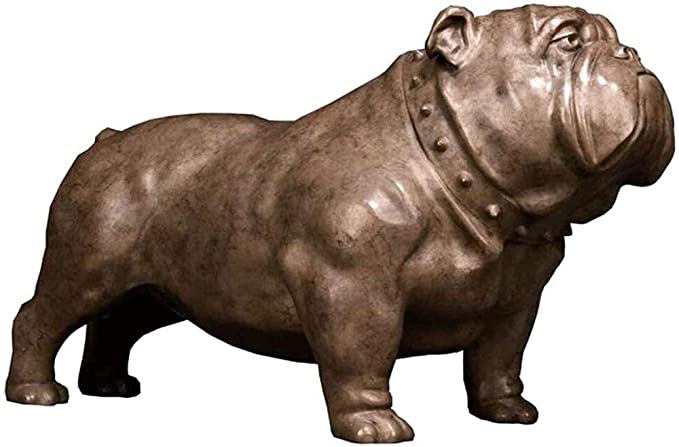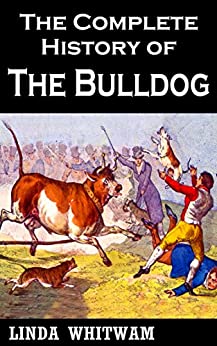The bulldog was first mentioned in literature circa 1500, the oldest spellings of the word are Bandog, Bonddogge and Bolddogge. In 1591, Shakespeare made reference to the word “Bandog” in the second part of King Henry VI, act 1, scene 4. The first reference to the modern spelling “Bulldog” is dated 1631 in a letter by a man named Preswick Eaton to George Wellingham of Swithens lane, London asking for some supplies to be sent, including a pipe, tobacco and liquor. He thanked his correspondent for a previous dog but requested another to be sent. Prestwick wrote “procuer mee two good Bulldogs, and let them be sent by ye first shipp” It is the first known instance to the occurrence of the word Bulldog.
Bulldogs can be traced back as far as the 5th century in England to an extinct breed called the Alaunt. The Alaunt was originally bred by the Alani tribes, who were nomads of Indo-European ancestry. The Alans were known as superb warriors, herdsmen, and breeders of horses and dogs. They bred their dogs for work and for specific duties. The Alaunt is regarded by cynologists as the ancestor to the original bulldog breeds. When they were sent to Britain back in 400AD the Alaunts genetic template was developed and this is where bulldogs descend from.
Bulldogs were originally bred to help butchers control their livestock as they were bred to catch and hold wild cattle, horse and boar. Initially, their intention was for farming purposes but the designation “bull” was applied in the 15th century as there was a new barbaric use for the breed.

Bull Baiting
Bull baiting dogs, referred to today as bulldogs, were bred to bait animals, mainly bulls and bears. It became a popular sport, in which wagers were placed on dogs and it took place in a pit. These trained dogs would creep as close to the bull as possible and would pounce to latch onto a tethered bulls face. The bull would usually be staked to the ground but as the dog darted at the bull, the bull would attempt to catch the dog with his head and horns and throw it into the air. It was common for a bull to maim or kill several dogs at such an event but the dog that grabbed the bull by the nose and pinned it to the ground would be the victor. Bulldogs were not only forced to fight with bulls, but also badgers, bears, lions and even elephants. A variant of this recreation sport was called “pinning the bull”, where dogs would set upon the bull one at a time, a successful attack resulting in the dog fastening his teeth strongly in the bull’s snout.
For 350 years, bulldogs were bred for aggression and reached the peak of its popularity in England in the early 1800s. Bull baiting was made illegal when parliament finally passed the Cruelty to Animals Act 1835. It forbade the keeping of any pit, for baiting or fighting any bull, bear, dog, or other animal.
The structure of the Bulldog
The extra ordinary features of a bulldog’s body and face are reminiscent of why they were used for bull baiting. The bulldog developed a stocky body and a massive head which typified a fearless and aggressive temperament. The shoulders were bred wide so the dog could crouch low on attack. The hindquarters of the bulldog are not as well developed as the forequarters, this allowed the dog to be violently shaken without spinal injury. The structure of the lower jawbone allowed the dog to latch onto the bull’s nose while hanging freely with ease. The wrinkles or folds on the face allowed the bull’s blood to flow down the dog’s face and away from the eyes. This is why the bulldog looks the way it does today.
Post Bull baiting
When bull baiting become illegal in 1835 it was feared the bulldog would become extinct as there was no real need for the breed. A new purpose was found for the bulldog and the breed was saved. Nowadays bulldogs are a far cry from their reputation as aggressive and fearless. They are now a friendly, loyal and gregarious breed who would prefer to stay away from a fight than engage in one.



